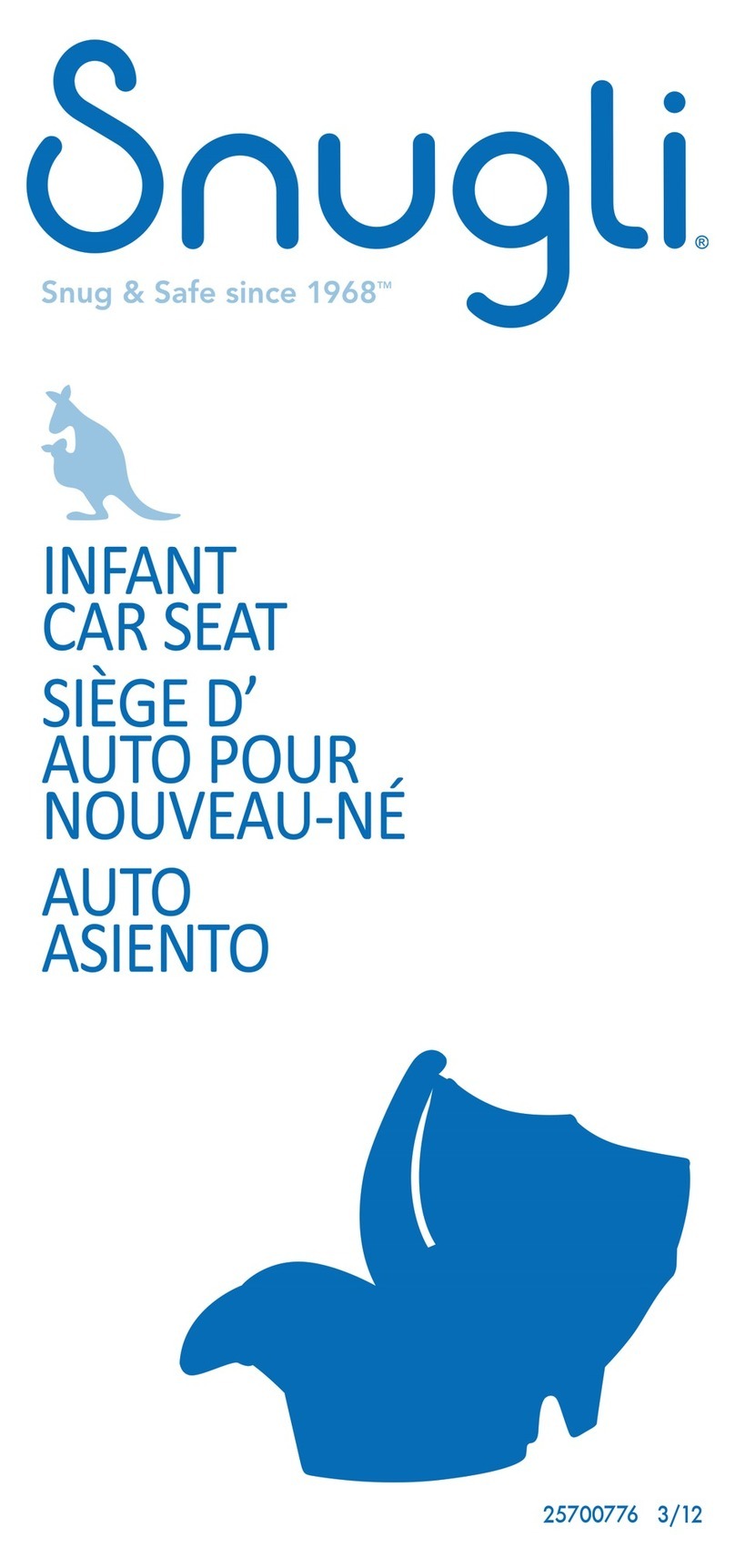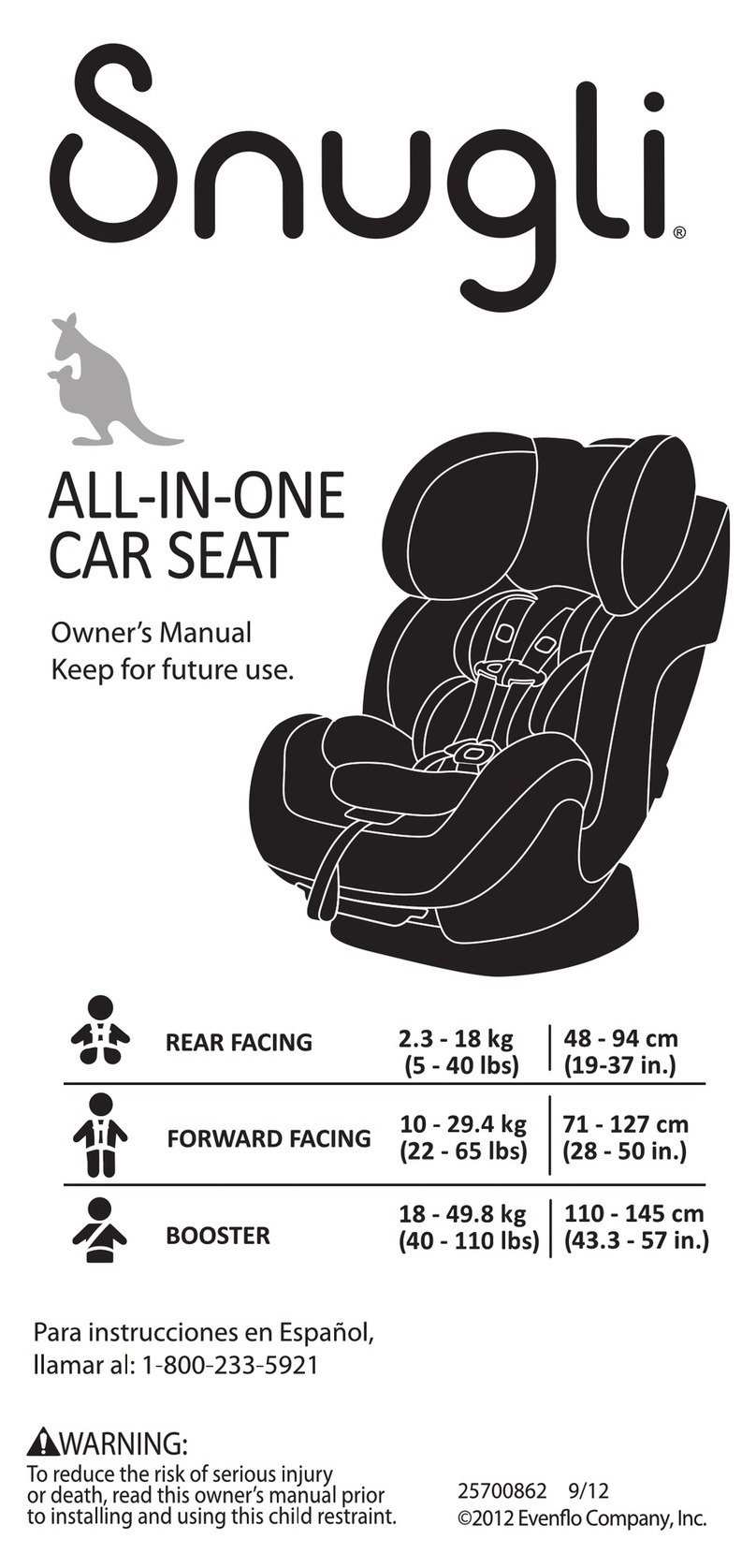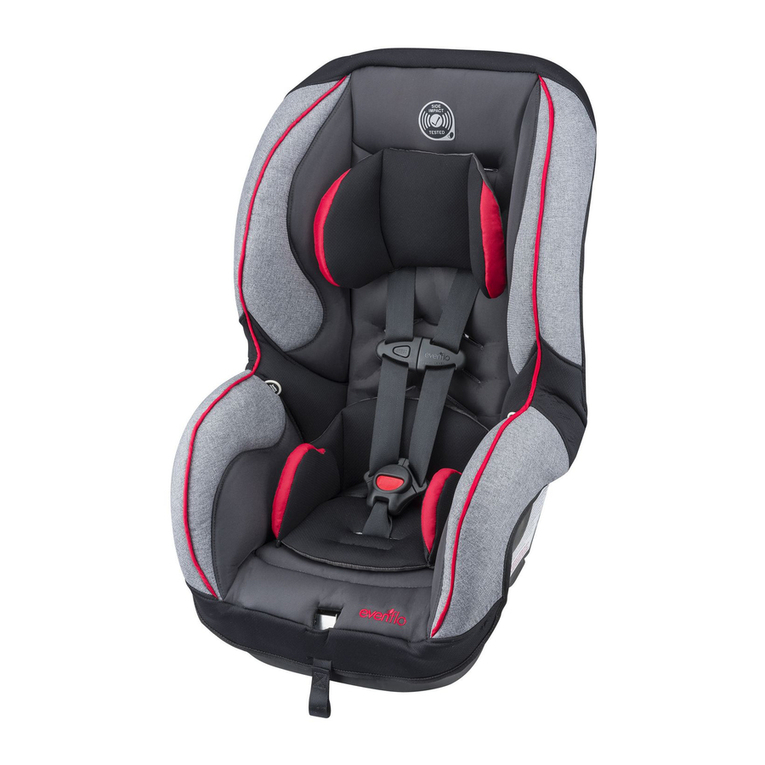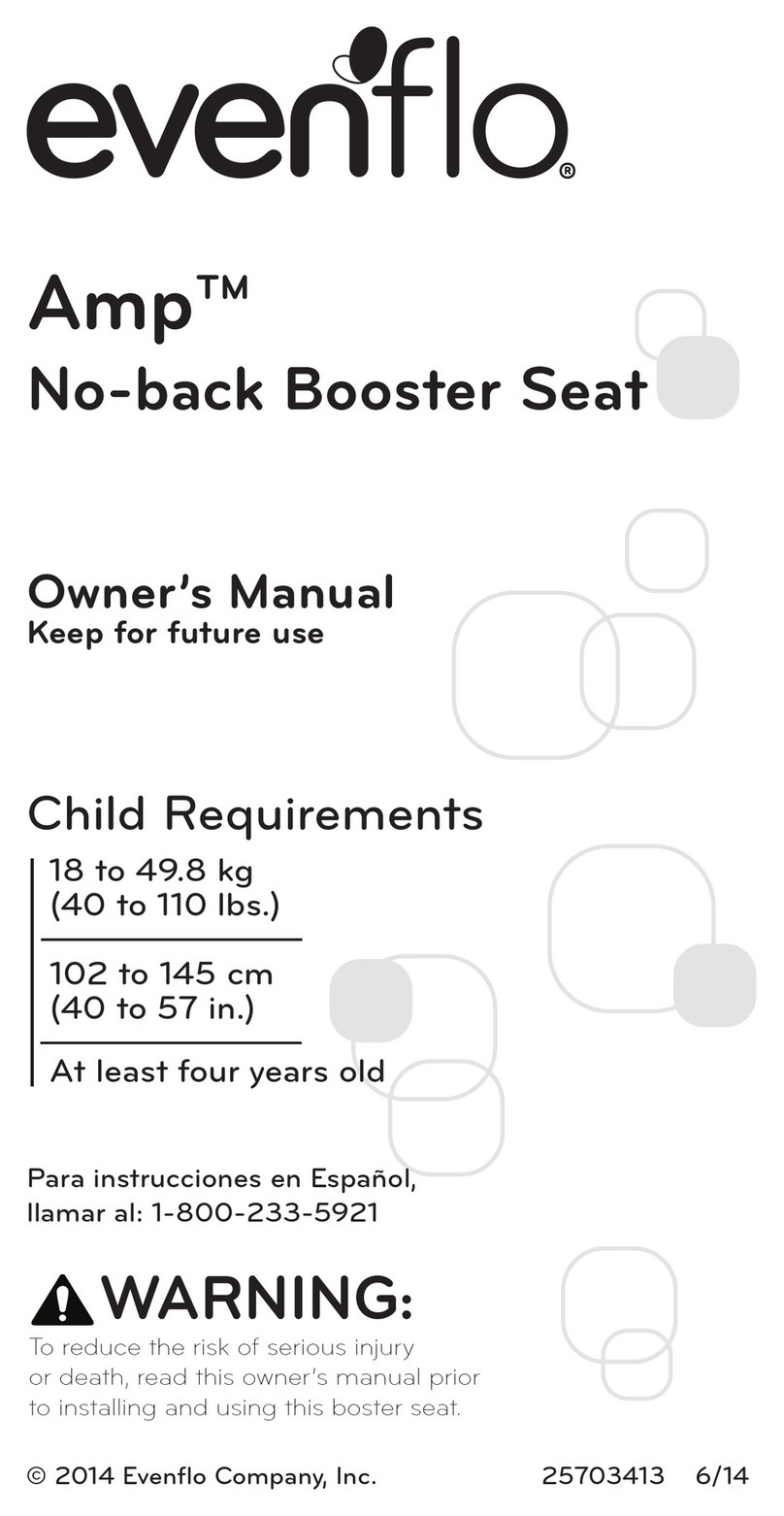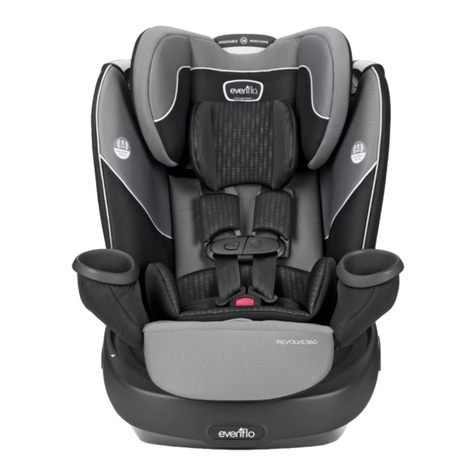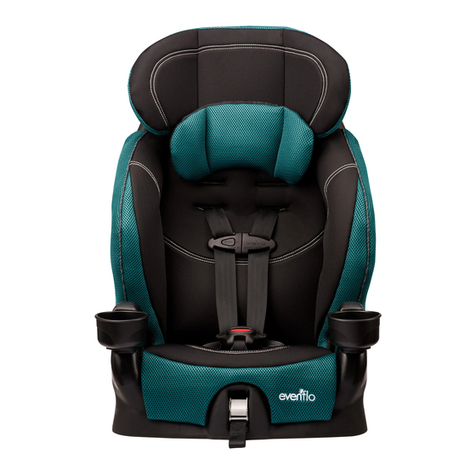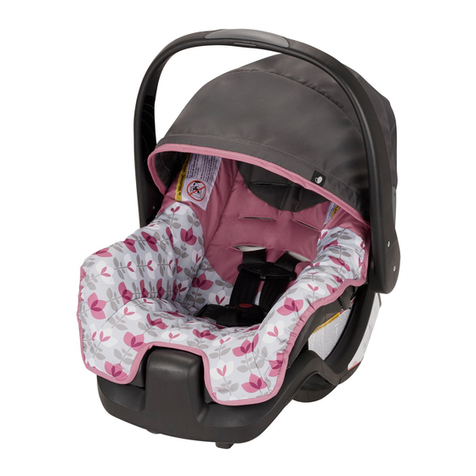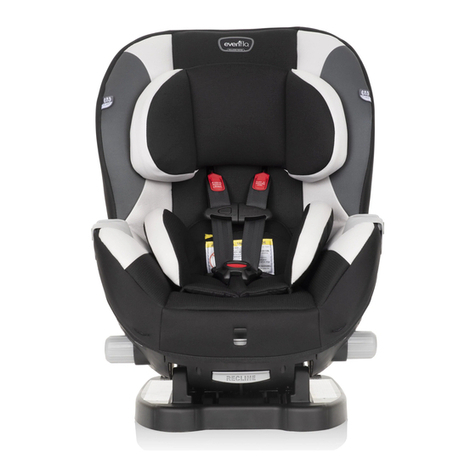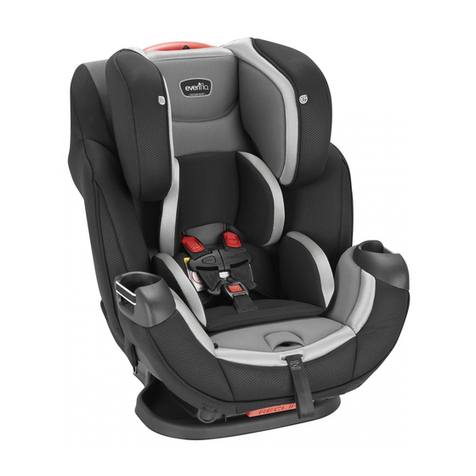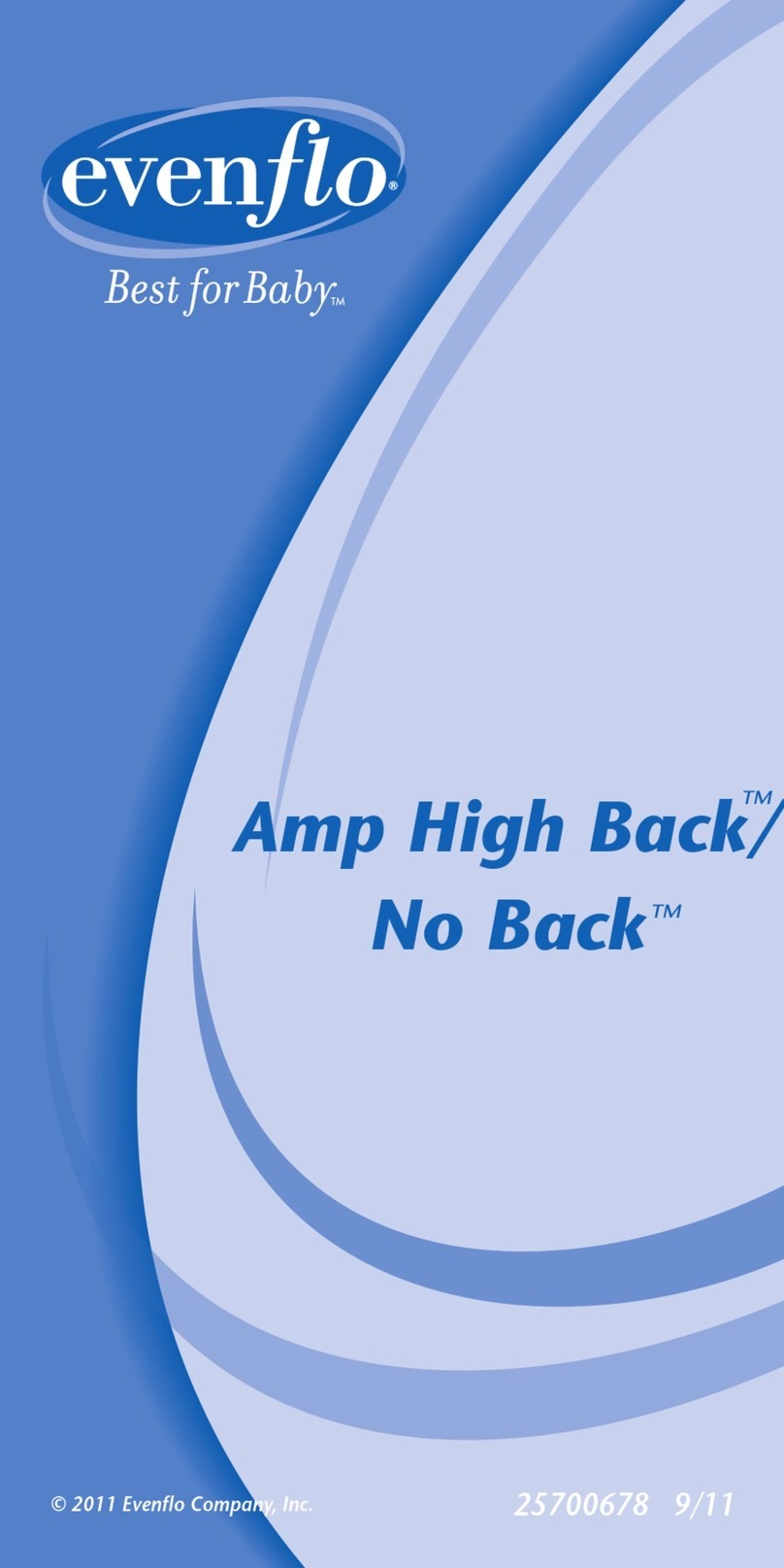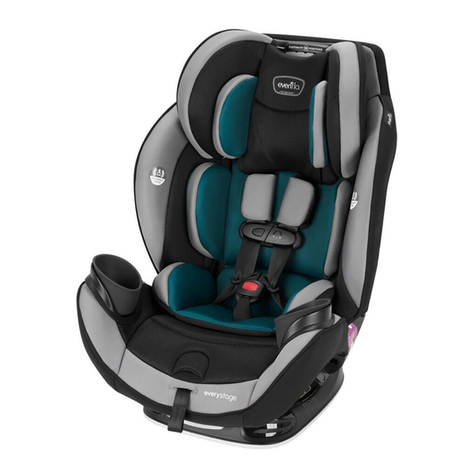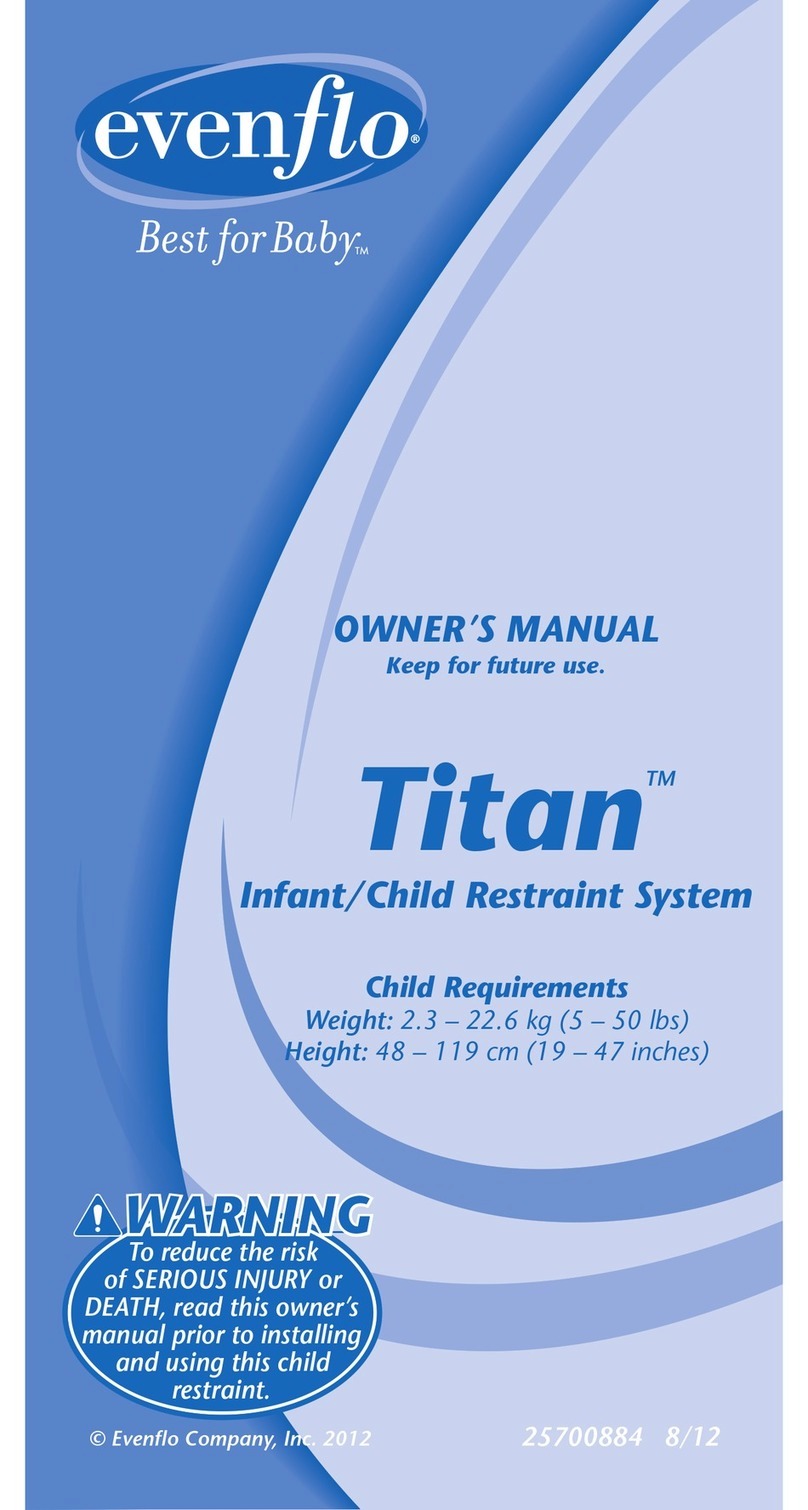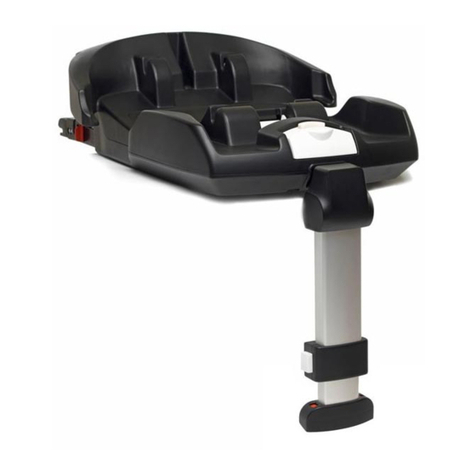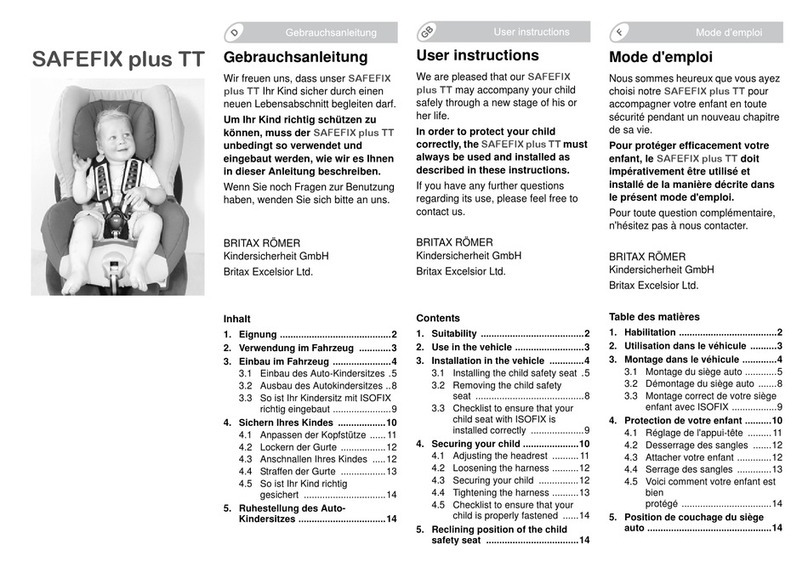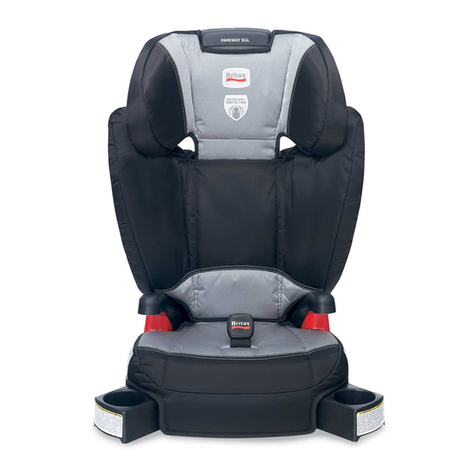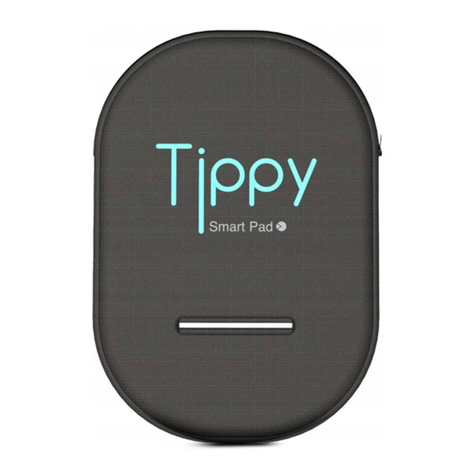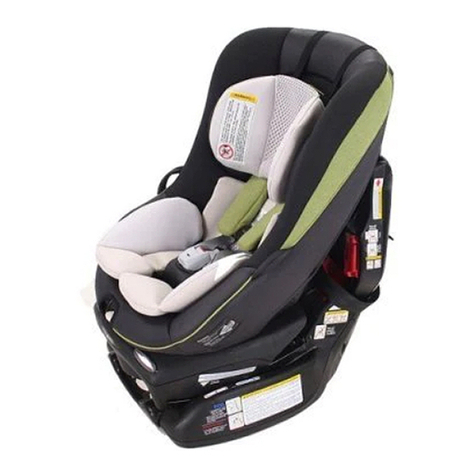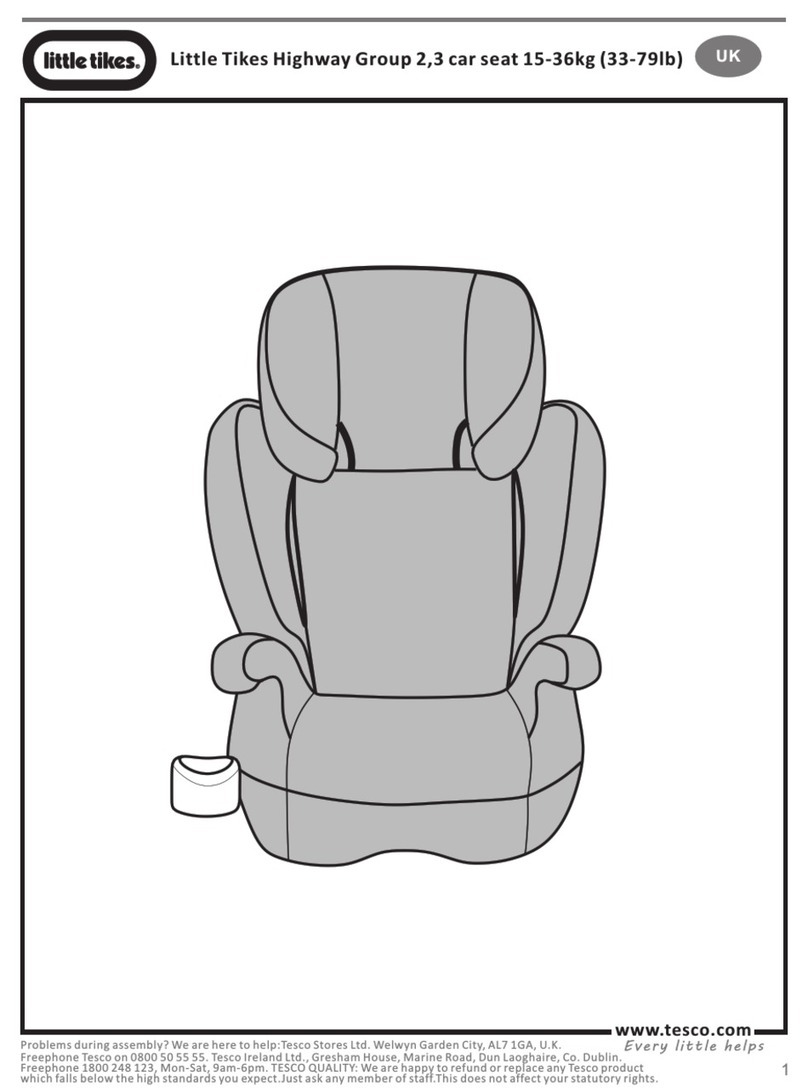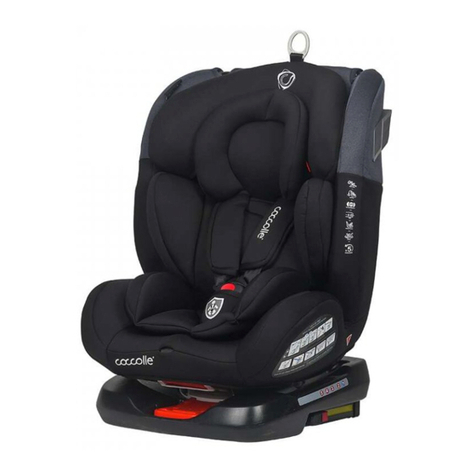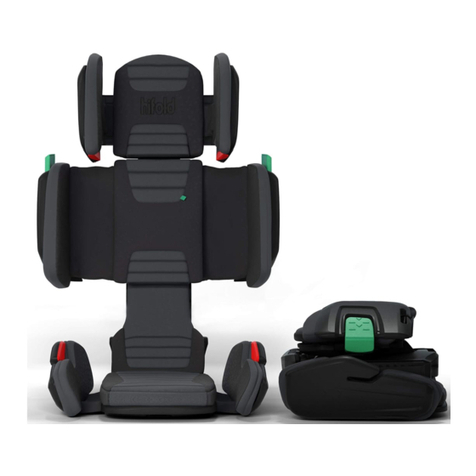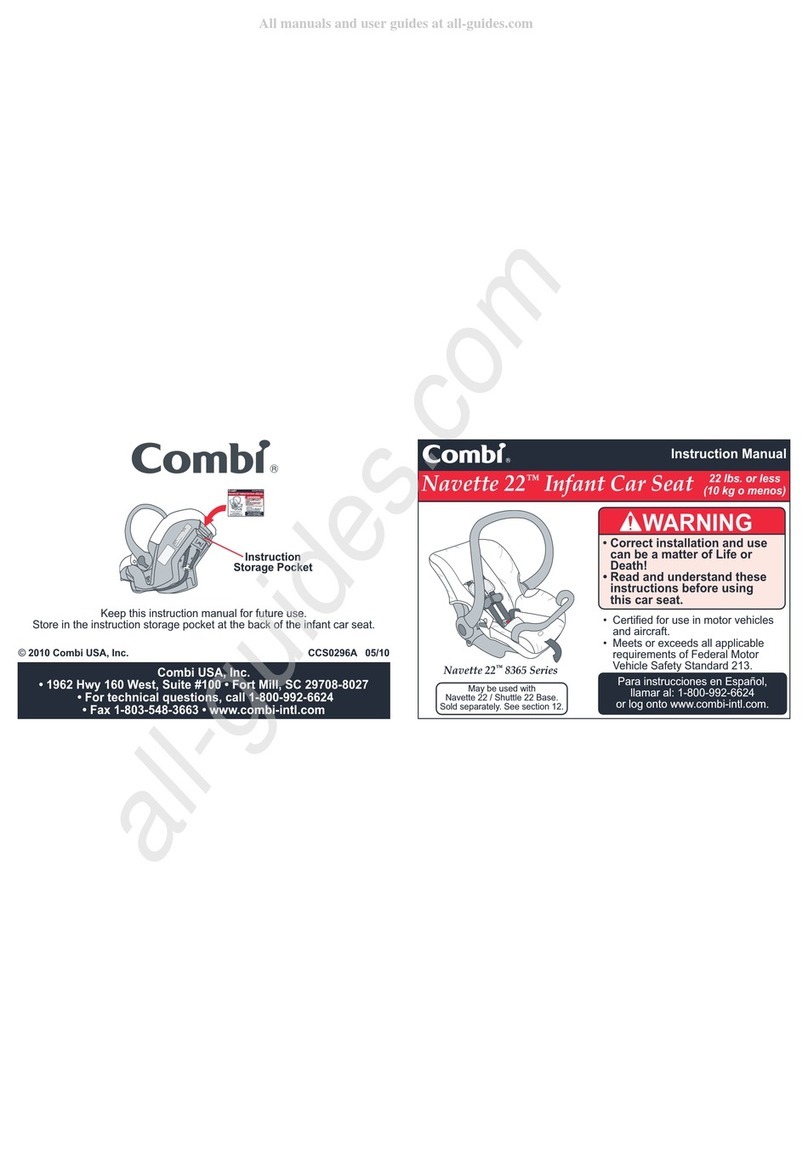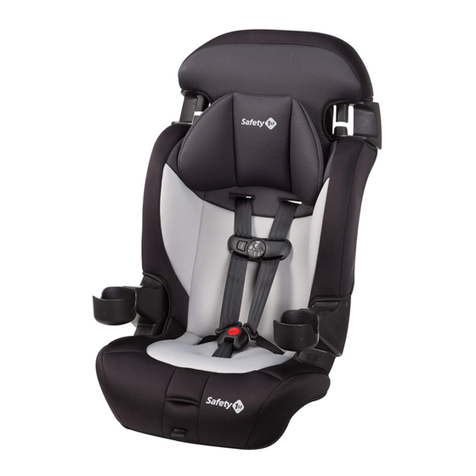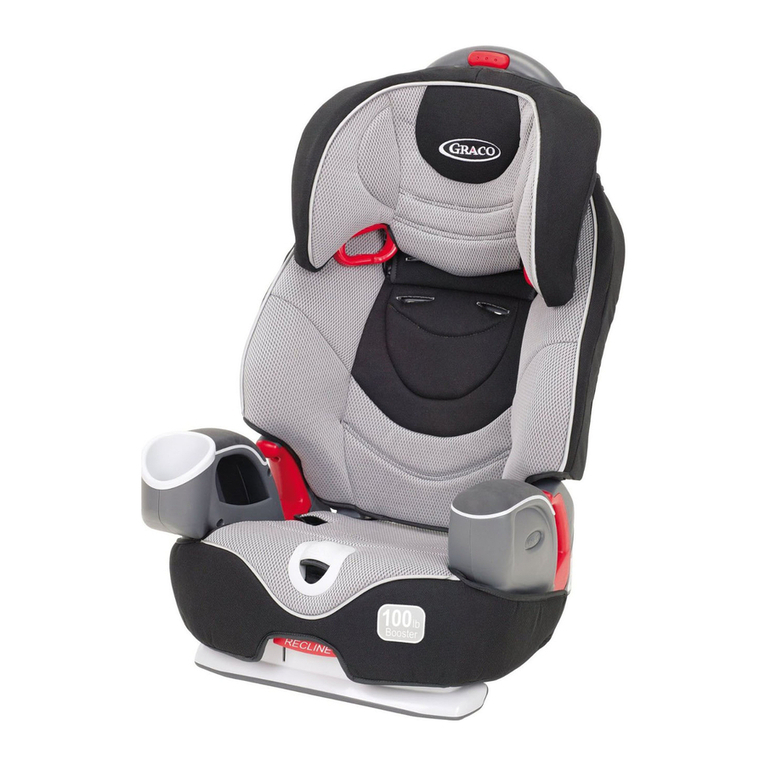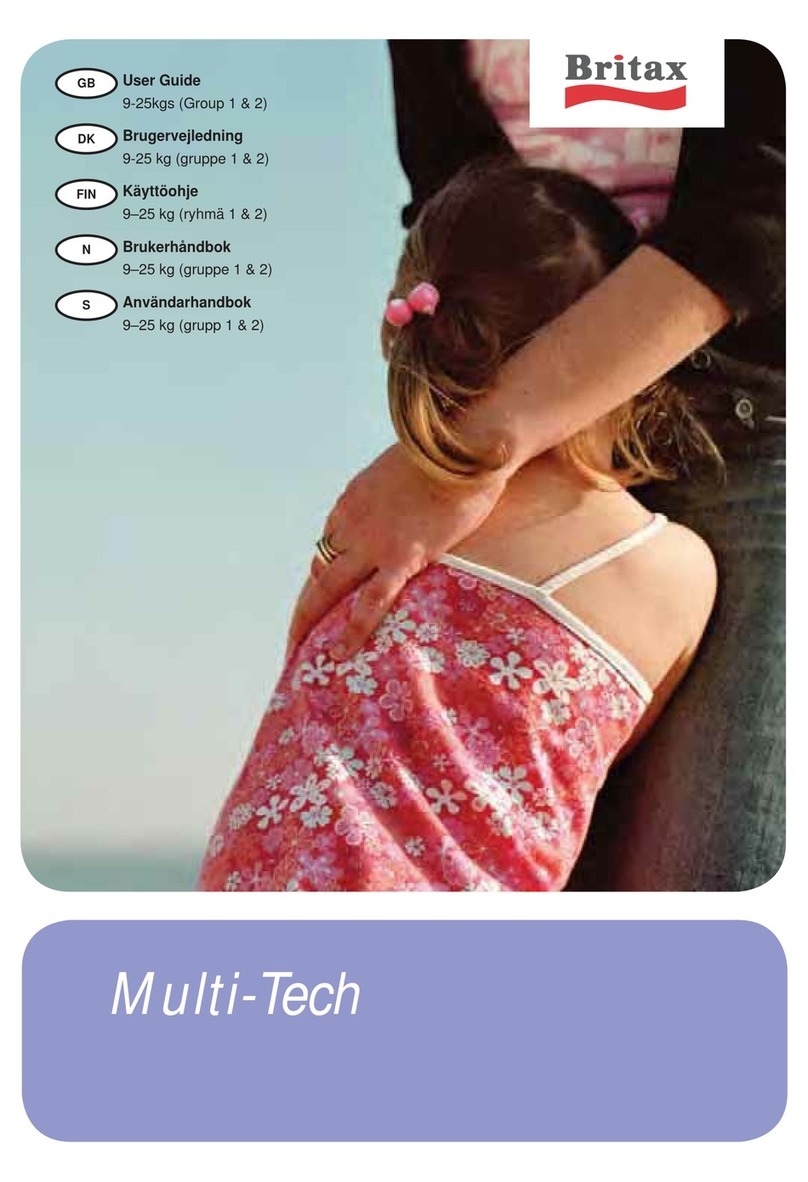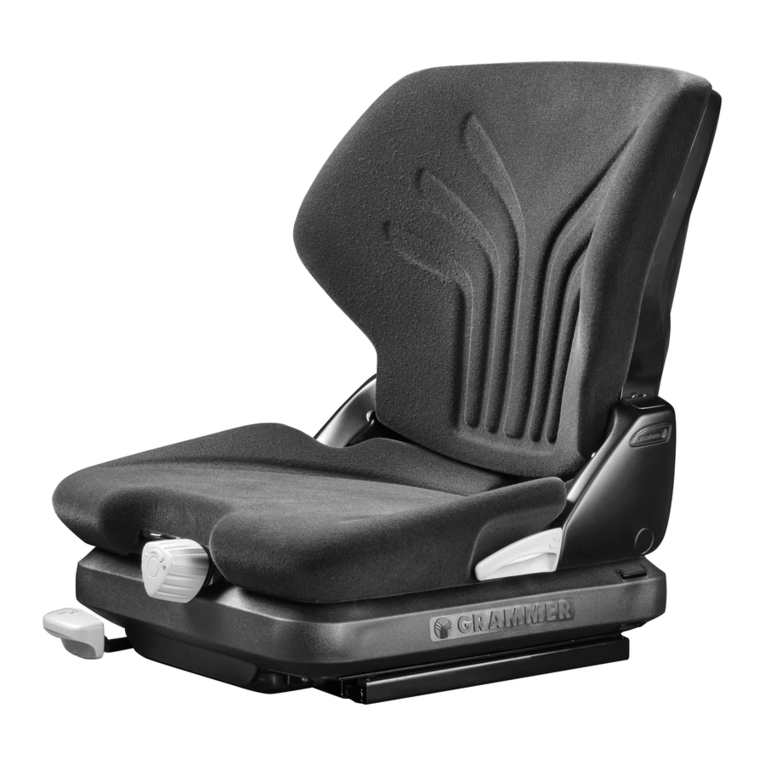54
General Warnings
• Failure to follow the Child Requirements for forward-
facing and belt-positioning use of this child
restraint could result in serious injury or death.
(See page 2 for Child Requirements).
• Failure to follow installation instructions can result in
the child striking the vehicle’s interior during a sudden
stop or crash. Serious injury or death may result.
These instructions and the instructions in your vehicle
owner’s manual must be followed carefully. If there is a
conflict between the two, the vehicle owner’s manual
regarding child restraint installation must be followed.
• NEVER leave child unattended.
• DO NOT use child restraint if it is damaged, broken, or
missing parts.
• DO NOT use this restraint if it has been involved in a
crash. It must be replaced.
• NEVER use this child restraint without the headrest
installed.
• NEVER use this child restraint rear-facing.
Location Warnings
• ALWAYS read and follow exactly the instructions that
accompany your vehicle and child restraint.
• According to statistics, children are safer when
properly restrained in a rear seating position than in
the front seating position. Generally, the center rear
position is safest and should be used, if available.
•
Some child restraints do not fit all vehicles or all seating
locations. There are many thousands of combinations
of vehicle makes, models, child restraint configurations,
seat belt designs, and seat cushion shapes.
The easiest way to determine whether the child
restraint is suitable for a particular seating position is
to check for a tight installation. If the child restraint
cannot be properly installed, DO NOT use the child
restraint. Consult vehicle owner’s manual, try a
different seating location, or call Evenflo.
• ONLY use this child restraint on forward-facing
vehicle seats. DO NOT use this restraint with vehicle
seats that face the rear or side.
• ONLY use this child restraint on vehicle seats with
backs that lock into place.
Forward-facing Position Warnings
•If the child weighs more than 22.6 kg (50 lbs) or their
shoulders are above the highest harness level, you
MUST use this child restraint as a booster (p. 28).
• Adjust, or remove, the vehicle headrest, in the seat
where the child restraint is to be fastened, so that
the back of the child restraint rests against the vehicle
seat back.
• The headrest on the vehicle seat in front of the child
should be put in its lowest position. The vehicle seat
back that the child faces must be fully padded and
free of any hard objects.
Seat Belt Warnings
If the vehicle seat belts are not routed and fastened
correctly, the child restraint may not protect the child in
a crash.
For 5-point Harness Use Only
• DO NOT use this child restraint if it moves more than
25 mm (1 in) forward or side-to-side at the vehicle
belt path. Serious injury or death may result from
poor installation. If you cannot tightly secure the child
restraint, try again or move it to another location.
For 5-point Harness and Booster Use
• DO NOT use this child restraint in a vehicle with
door-mounted seat belts.
• DO NOT use this child restraint in a vehicle with seat
belts that automatically move along the vehicle frame
when the door is opened. These seat belts will not
hold a child restraint properly.
• If the vehicle seat belts are not routed and fastened
correctly, the child restraint may not protect the child
in a crash.
• DO NOT allow the seat belt release button to touch
the child restraint. Accidental contact may cause the
seat belt to release. If necessary, turn the seat belt
release button away from the child restraint or move
the child restraint to a different location.
• Failure to adjust the harness or vehicle seat belts
snugly around the child may result in the child
striking the vehicle’s interior during a sudden stop
or crash. Serious injury or death may occur.
Seat Belt Warnings
For Booster Use Only
• Warning! Use only the vehicle’s lap and shoulder belt
system when restraining the child in this booster seat.
• The shoulder belt MUST be routed properly. (p. 36).
WARNINGWARNING

